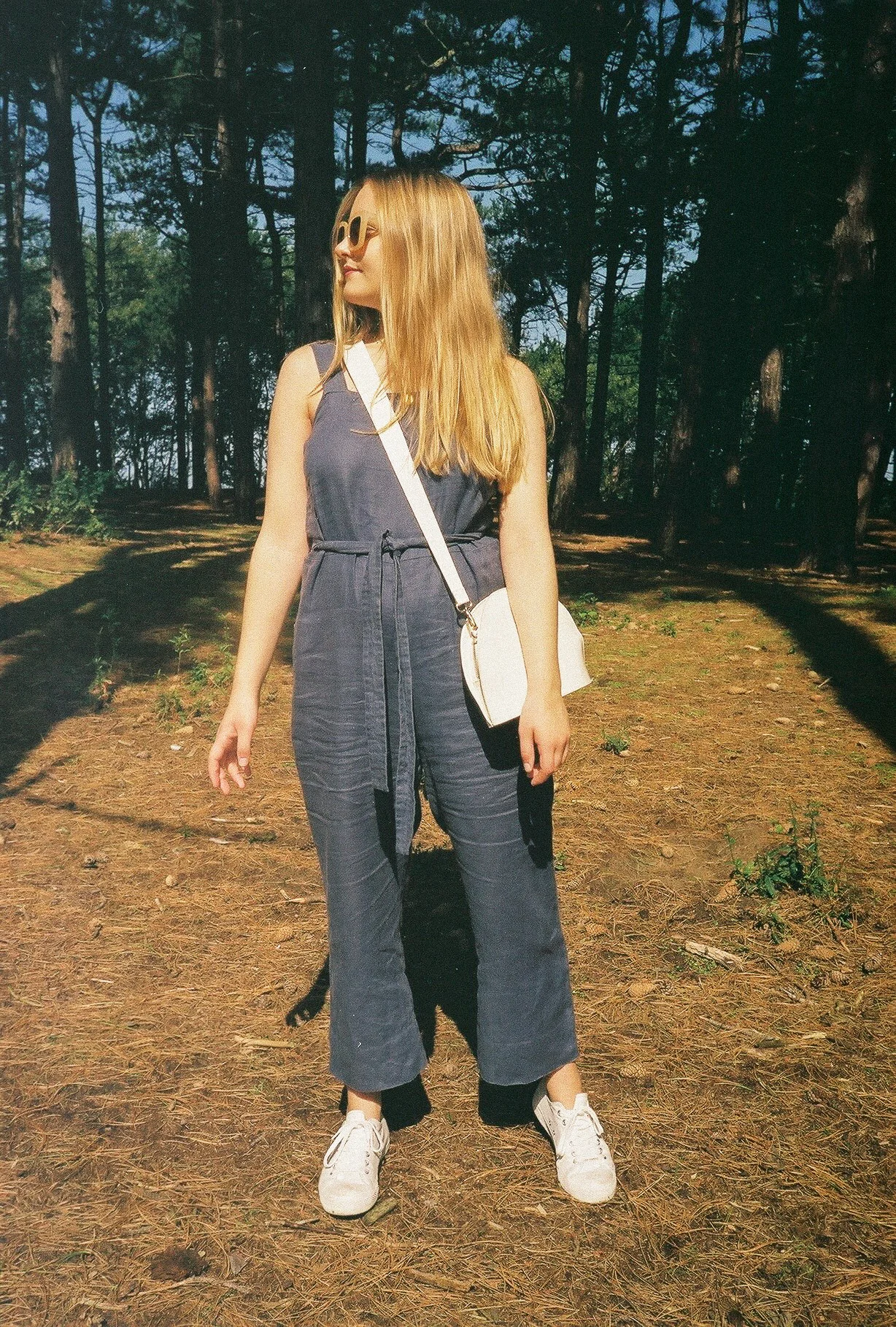A New Approach to Clothes Shopping
Just a heads up, these photos were taken for a different blog post that I then decided that I didn’t want to write, so I’m using them for this one instead, that I very much do want to write, even though they have no relevance whatsoever to the subject matter!
I’ve been thinking a lot lately about ways of shopping sustainably that aren’t:
Never buying clothes ever again
Exclusively buying clothes from sustainable fashion brands
Only shopping second hand
Each of these, especially the first one, feels too restrictive to me at the moment and when I try and put any of these methods into place, they are never successful. The truth is, I love shopping; I love clothes and I love getting dressed and new clothes do provide me with a lot of satisfaction, inspiration and genuine happiness.
Maybe this is materialistic- in fact, I’m sure it is. But having been brought up in a material world, as Madonna put it 15 years before I was born, it’s difficult and I would say impossible to just snap out of it, especially if, like me, fashion is the thing, or one of the things, you’re most interested in, and if, like me, it helps you to form your identity and is the source of a lot of your self-confidence.
So I’m trying to let go of any methods or mindsets that are completely abstinent in their approach, not because they’re not necessary, they completely are, but because, for me, they don’t work and I am desperate to find a sustainable way of approaching shopping for fashion that really works.
But although sustainability and the fact that our planet is in imminent danger is at the driving force of my new approach to shopping, it’s not the only reason for it. Having begun to clear out my wardrobe quarterly, I’ve noticed how many pieces in my wardrobe have been worn only a few times. I know a lot of people struggle with buying things for a particular events and only wearing them once but personally, I don’t find that this happens to me. My issue is the impulse purchase; the “oh it’s only £8 in the sale and I like it, why not?”
Well, why not is because this type of purchase is always the one that I’m getting rid of when I’m clearing out my wardrobe. These bargain pieces are the ones that fill up my wardrobe and make me feel like I’ve got nothing to wear, because all of the pieces in my wardrobe that I truly love are buried by these items of clothing that I feel more or less indifferent towards, after the gratification of finding such a bargain, that usually wears off within a few weeks.
Not only this, but these types of purchases are the ones that encourage fast fashion retailers to keep making cheap, disposable clothes that they can sell and make for cheap prices, in bulk and in the least sustainable, and most cost-effective way.
So, I’ve decided rather than having a wardrobe full of A LOT of clothes that I like, I want to have a wardrobe full of a selection of clothes that I love. Not a capsule wardrobe by any means (my bulging wardrobe doors will tell you that), but I am definitely taking some tips from the philosophy of the capsule wardrobe, the main one being that quality is better than quantity.
And I have decided that, for me, there is no real way to tell if I truly love a piece of clothing other than the price. I am never going to spend £80 on something (and that is A LOT of money for me on a student budget) unless I love it and know I will get lots of wear out of. And so, despite my limited funds this is the way in which I want to shop.
My plan is to buy one or two expensive pieces per month, ideally from sustainable brands but I am not going to feel endlessly bad about it if they do end up being from high-street brands or non-sustainable brands, because I know they will be sustainable purchases in that I will wear them for a long time and look after them well.
But because of my aforementioned shopping addiction, one or two pieces just aren’t going to cut it for me. I’d love to tell myself that they will, but realistically, if I set myself this target, I’ll only end up in and amongst the Topshop sale racks on my way home from uni buying those very pieces that never stand the test of time in my wardrobe. Getting dressed in the morning is often my favourite part of the day and I know I will feel the urge to buy more if I don’t have new pieces in my wardrobe to style, it’s not a sustainable mindset but it’s not something I can change overnight either, so I’m trying to find sustainable methods to deal with it.
The method I’m currently trying is that, along with my one or two expensive pieces a month, I’m also allowing myself to do as much second hand shopping as I want, and trying to visit charity shops at least weekly. If I slip and buy one or two high-street pieces a month at a lower price point, again, I’m not going to punish myself. One or two is better than four or five and I hope that, with time, I will stop buying from fast-fashion retailers altogether!
But, in reality, I’m not going to be able to afford many new clothes anyway after my investment pieces (I’m thinking of spending either around £80-120 on one item or £50-£60 on two items), so hopefully that will mean I have no choice but to abandon the high street and head to the charity shops.
So far this month, I’ve bought a dress in the & Other Stories sale for £26.55, obviously not a great start but it was a classic piece and I would like to think that I would have bought it at full price if I had the money to do so, and that it will last a long time in my wardrobe because of its timelessness. I have also spent £50 at Uniqlo on a jumper and a skirt (£25 each) but, again, both are great quality, classic pieces that I really don’t think I will grow tired of. Finally I bought a vintage playsuit that cost £19, which is in line with my new approach because it’s second hand.
So, clearly things aren’t going completely to plan yet, although Uniqlo and Stories are definitely better than lots of other fast fashion brands because they produce less clothing, but nevertheless, their sustainability credentials just aren’t good enough. I’m struggling with my investment pieces because I find it difficult to know when it’s the one I should be buying and I so I put the purchase of in case I see something I like more, but then this leads me to the high-street because I need to fulfil that space in my wardrobe (or the shopping urge) elsewhere. So maybe I should just be going with my gut instinct with investment purchases- any tips on this are welcome!
Anyway, I hope I can keep you updated on how this new approach to fashion goes, but so far this month (and during August) I’ve definitely bought less new clothes than I normally would, so my mindset must be changing, now my purchases just need to follow!













